Ring-necked Duck Aythya collaris (LBRC)
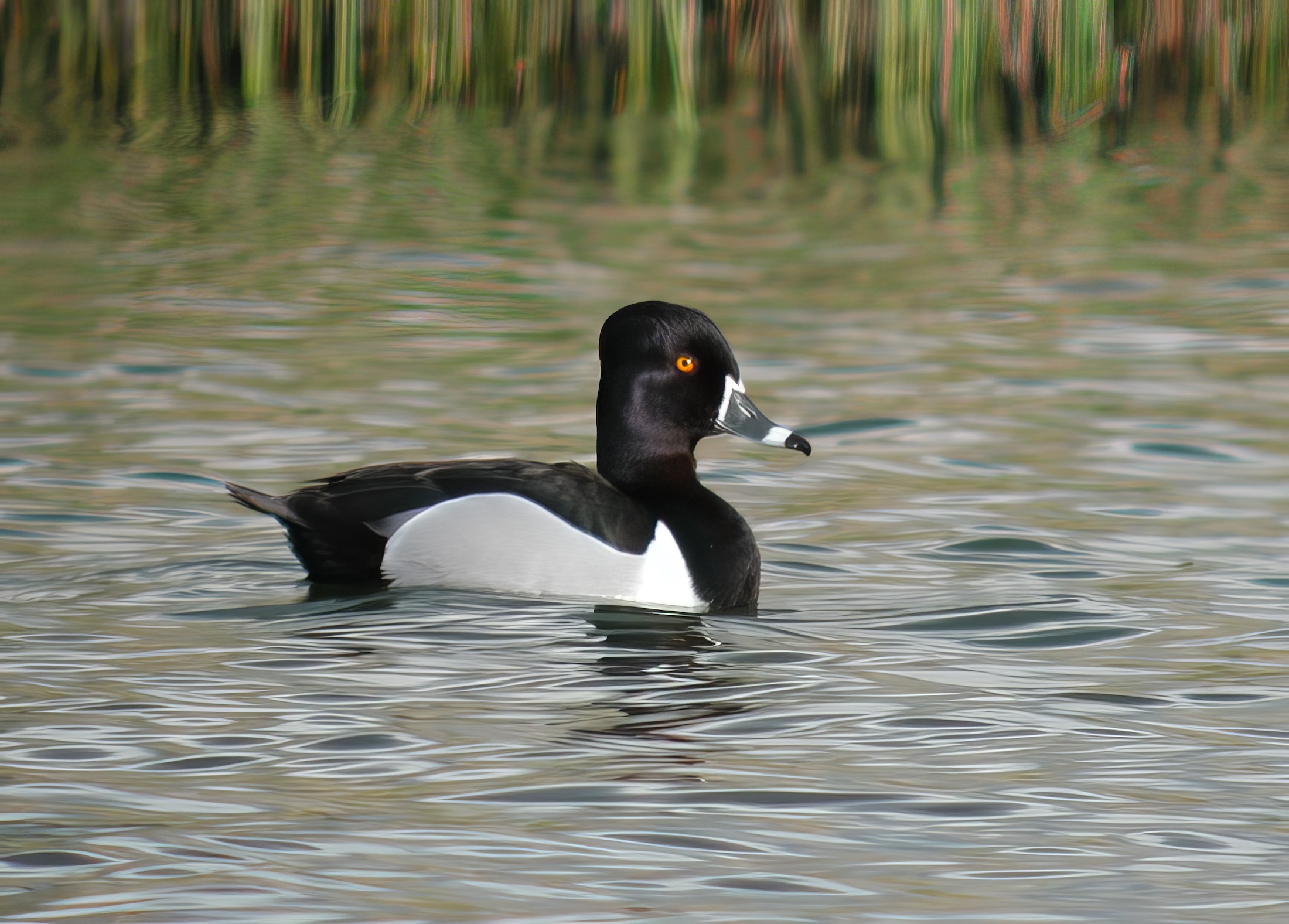
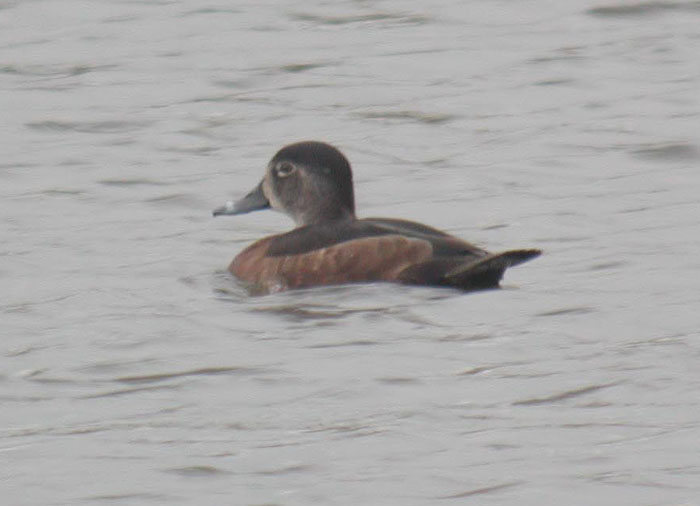
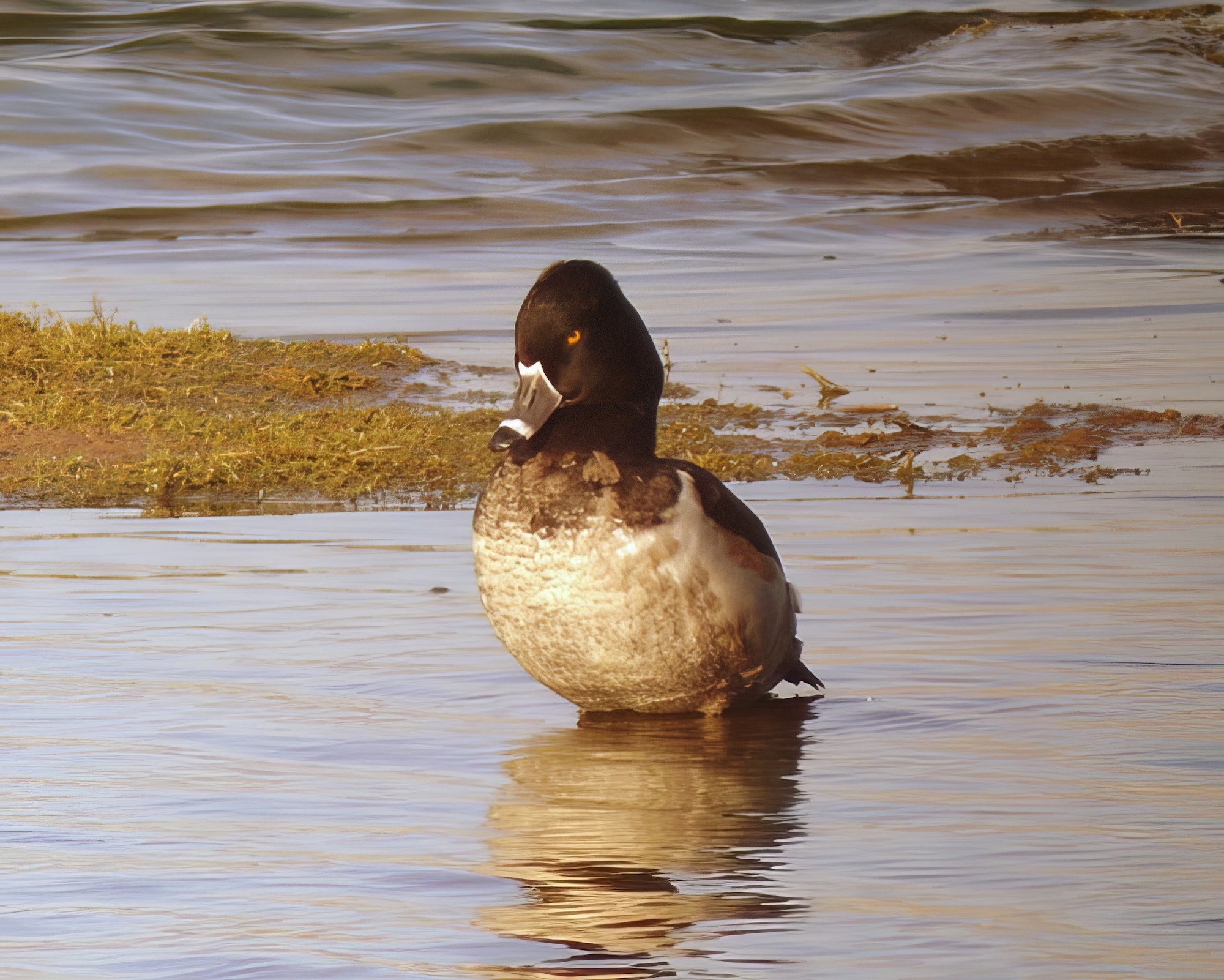
The first county record was a male at Messingham in June 1979, returning in October 1979 and also seen at nearby Barrow Haven into November 1979; what was likely to have been the same bird was seen in February and April 1980. There was an eight-year gap before the next record in 1988 but after that the species has turned up regularly to 2021. Most of these have been males but there have been at least seven females in 2000, 2003, 2006, 2017, 2018, 2020 and 2021; the female in 2000 arrived with a 1CY male. Determining the number of birds involved is difficult but a reasonable estimate is of between 15-20 birds. The gravel pits in the Kirkby/Tattershall area and the Humber bank clay pits have been popular in recent years. Many of these birds have been long stayers but also very mobile between sites. An 1CY drake arrived at Gibraltar Point on December 28th, 2006 staying until April 26th, 2007; another male, an adult, arrived January 15th, 2012 at Kirkby GP and toured other water bodies at West Ashby and Donington on Bain before being seen last back at Kirkby GP on April 23rd, 2012. The species was removed from the BBRC list in 1994; there have been 854 British records 1958-2018 (White and Kehoe 2020).
Finder’s report: Ring-necked Duck at Messingham SQ, June 3rd, 1979, first county record.
by D. Suddaby.
Note: this account is based on the original BBRC submission. There were 26 records of Ring-necked Duck in Britain in 1979, bringing the total to 85. It ceased to be considered by the RC at the end of 1993. In October 1979, what was presumed to be the same bird was at Messingham SQ again October 6th-20th and then Barrow Haven October 24th-November 3rd.
Circumstances
On the morning of June 3rd, 1979, at Messingham Sand Quarry I walked up on to a raised area called ‘the Mound’ as the mist was just rising and the sun began to shine. I looked over a relatively large mere from inside a semi-constructed hide. I was mainly looking for terns and counting the ducks. As I was counting the latter, I noticed a duck amongst the five male and one female Pochard which had a large black head with a distinctive shape. A white marking on the bill and on further inspection, a white marking at the base of the bill. I also noticed that it had grey flanks which came to a bold white peak in front of the wing. I watched the bird from a distance of approximately 10m., and it then drifted off with the Pochard to within two ft. of the shoreline, approximately 30m. away. On its way it dived once. I watched this bird for about 10 minutes and while taking notes the Pochard and Ring-necked Duck must have flown off because I could not relocate them.
During the early afternoon that day at approximately 14.00 hr, Richard Hewson and myself relocated the bird again with several Pochard in a smaller mere behind the one where I originally saw it. Here again I took field notes and noted that even at 20m. away it was aware of us and to show this, the bird extended its neck and quickly drifted off into the reeds with the Pochard. Several minutes later they re-emerged, and the Ring-necked Duck sat and preened. By this time the sun was behind us as we watched the bird for approximately 20 minutes, we then departed leaving it preening.
Description
General appearance – Pochard-sized duck possibly looking larger because of the head shape.
Upperparts – the head was large and had a distinctive shape (see sketches) which lacked the tuft which is characteristic of Tufted duck. The colour of the head was black/blue which had a distinctive sheen when the sun was on the bird. The neck colour was a continuation of the head colour but was more matt, lacking the sheen of the head. Rest of upperparts were black in colour.
Underparts – the flanks were grey with a bold white marking in front of the wing.
Bare parts – in good light, the eye colour was seen to be orange-yellow.
Behaviour – tended to associate with the Pochards rather than with Tufted Ducks. While being observed it never flew, instead it mainly preened, and I have only seen it dive once.
Identification - This bird is clearly no Tufted Duck or Scaup and while in the field I suspected that it was a male Ring-necked Duck Aythya collaris. This was backed up by reading about the species and studying the pictures of them in the books - A Field Guide to the Birds of Britain and Europe by R. Peterson, G. Mountfort and P. A. D. Hollom (3rd edition), and also in the Hamlyn Guide to Birds of Britain and Europe by B. Bruun. I saw this bird again since June 3rd, on the evening of June 5th and in the same place with several male Pochard. Other people who verified this record are J. Harriman, L. Kearsley, and G. Thomas, who I telephoned on June 3rd who saw the bird that evening. J. Harriman and G. Catley also saw the bird on June 4th-5th.
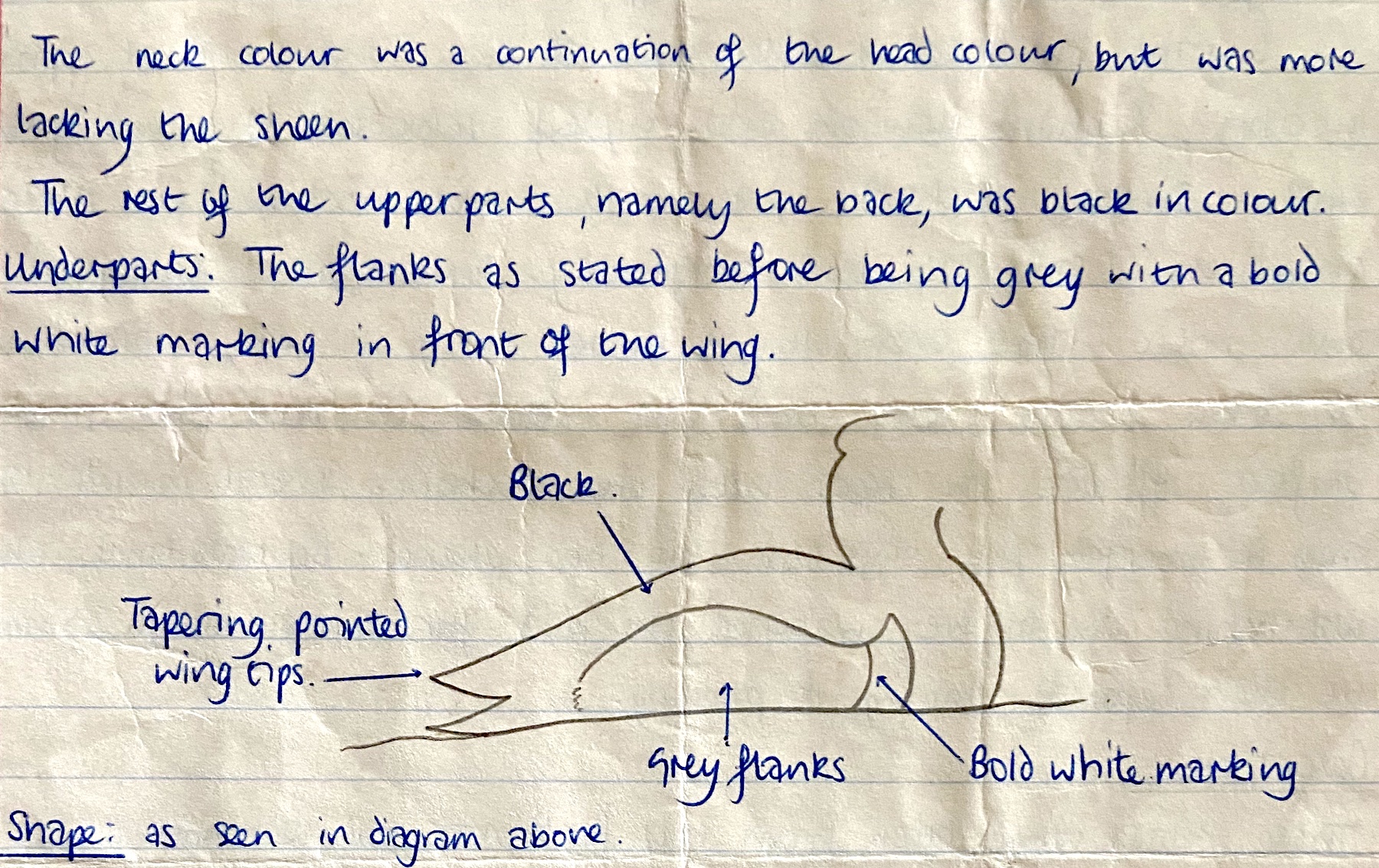
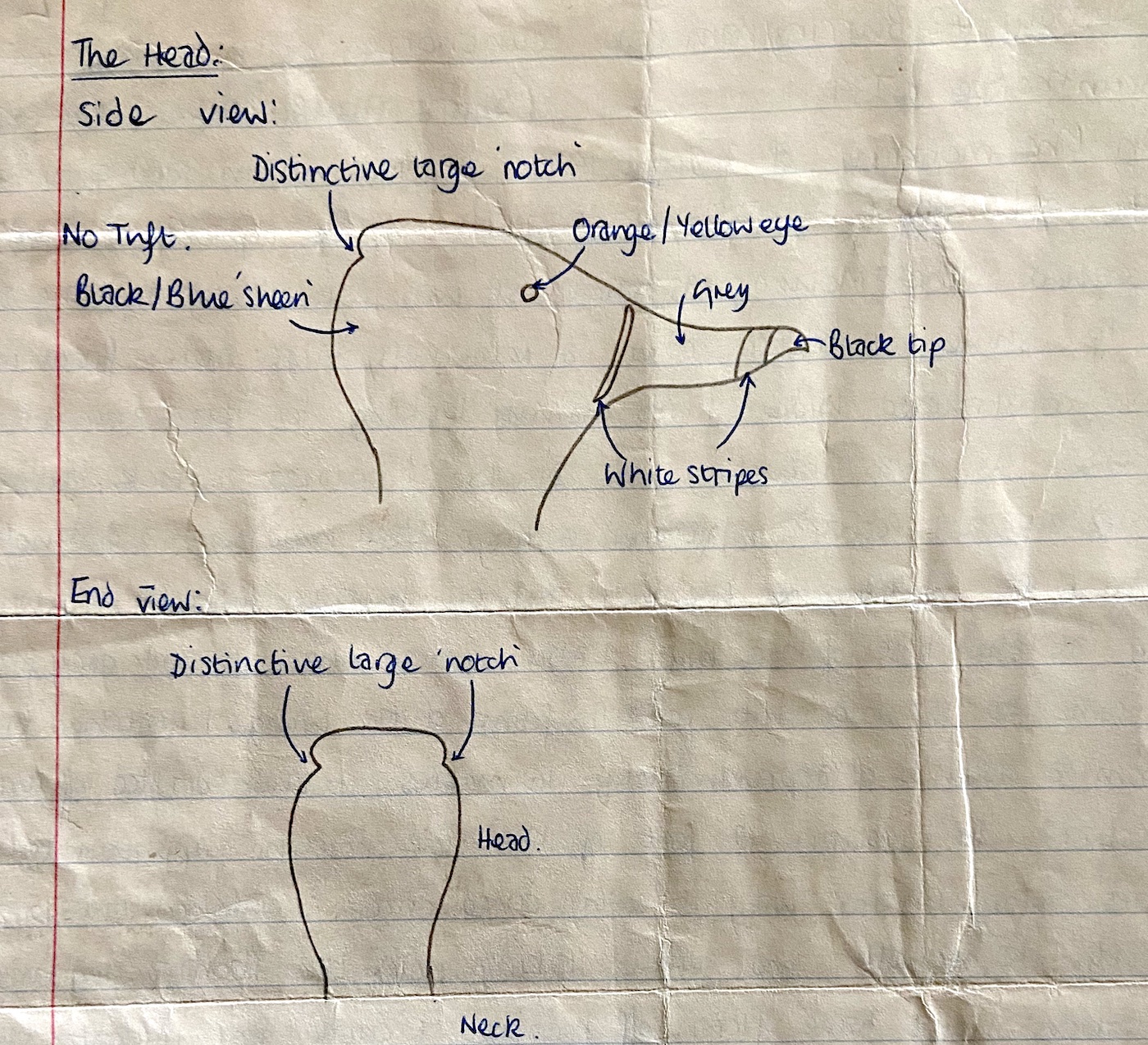
Sketches of the Ring-necked Duck at Messingham SQ from the original RC submission by Dave Suddaby.
(Account as per new Birds of Lincolnshire (2021), included September 2022)

